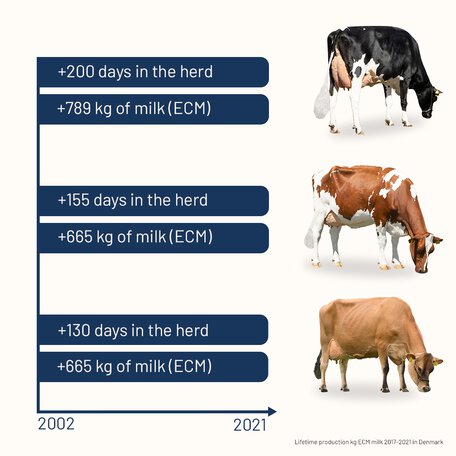Focusing on improving lifetime production can help you achieve higher profitability and sustainability for your dairy business. Poor fertility, low yield and health problems are the most common culling reasons in dairy herds.
VikingGenetics' innovative breeding programmes foster healthy, efficient, trouble-free cows with high production of milk and solids. They also have excellent fertility and a natural defence against disease.
By choosing VikingGenetics sires, you will be continuously improving the genetic gain for each generation of your herd.
Here you can see the genetic progress that was achieved during 2002-2021 for Longevity and Production, and the corresponding phenotypic effect.
|
|
Longevity |
Production |
||
|
Index units |
Days in herd |
Index units |
Kg, ECM |
|
|
VikingHolstein |
+36 |
+200 days |
+38 |
+781 kg |
|
VikingRed |
+28 |
+155 days |
+28 |
+665 kg |
|
VikingJersey |
+23 |
+130 days |
+34 |
+665 kg |



